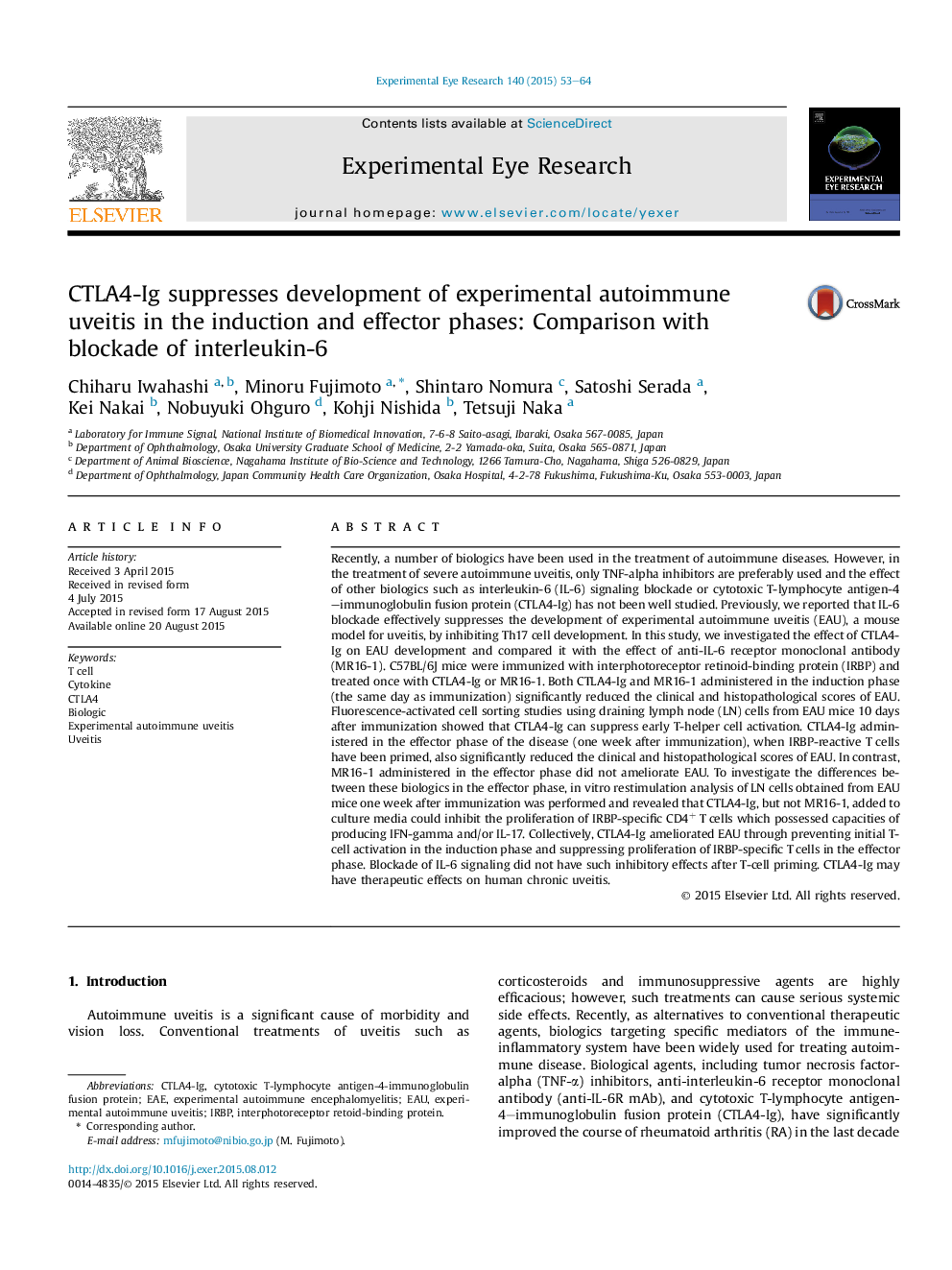| کد مقاله | کد نشریه | سال انتشار | مقاله انگلیسی | نسخه تمام متن |
|---|---|---|---|---|
| 6196386 | 1602582 | 2015 | 12 صفحه PDF | دانلود رایگان |

- CTLA4-Ig can prevent initial T-helper cell activation in EAU.
- Both CTLA4-Ig and IL-6 blockade administered in the induction phase ameliorates EAU.
- Unlike IL-6 blockade, CTLA4-Ig administered after T-cell priming ameliorates EAU.
- CTLA4-Ig can inhibit proliferation of retinal antigen-specific T cells after priming.
- Our data provide the basis for applying CTLA4-Ig on human chronic uveitis.
Recently, a number of biologics have been used in the treatment of autoimmune diseases. However, in the treatment of severe autoimmune uveitis, only TNF-alpha inhibitors are preferably used and the effect of other biologics such as interleukin-6 (IL-6) signaling blockade or cytotoxic T-lymphocyte antigen-4-immunoglobulin fusion protein (CTLA4-Ig) has not been well studied. Previously, we reported that IL-6 blockade effectively suppresses the development of experimental autoimmune uveitis (EAU), a mouse model for uveitis, by inhibiting Th17 cell development. In this study, we investigated the effect of CTLA4-Ig on EAU development and compared it with the effect of anti-IL-6 receptor monoclonal antibody (MR16-1). C57BL/6J mice were immunized with interphotoreceptor retinoid-binding protein (IRBP) and treated once with CTLA4-Ig or MR16-1. Both CTLA4-Ig and MR16-1 administered in the induction phase (the same day as immunization) significantly reduced the clinical and histopathological scores of EAU. Fluorescence-activated cell sorting studies using draining lymph node (LN) cells from EAU mice 10 days after immunization showed that CTLA4-Ig can suppress early T-helper cell activation. CTLA4-Ig administered in the effector phase of the disease (one week after immunization), when IRBP-reactive T cells have been primed, also significantly reduced the clinical and histopathological scores of EAU. In contrast, MR16-1 administered in the effector phase did not ameliorate EAU. To investigate the differences between these biologics in the effector phase, in vitro restimulation analysis of LN cells obtained from EAU mice one week after immunization was performed and revealed that CTLA4-Ig, but not MR16-1, added to culture media could inhibit the proliferation of IRBP-specific CD4+ T cells which possessed capacities of producing IFN-gamma and/or IL-17. Collectively, CTLA4-Ig ameliorated EAU through preventing initial T-cell activation in the induction phase and suppressing proliferation of IRBP-specific T cells in the effector phase. Blockade of IL-6 signaling did not have such inhibitory effects after T-cell priming. CTLA4-Ig may have therapeutic effects on human chronic uveitis.
Journal: Experimental Eye Research - Volume 140, November 2015, Pages 53-64